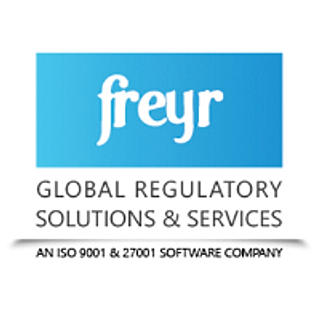New EU MDR - Timelines & Renewed Documentation Requirements
- Freyr Global Regulatory Solutions
- Jun 8, 2018
- 2 min read
On April 5, 2017, the European Commission has approved the new Medical Device Regulations (MDR) - 2017/745-MDR and 2017/746-IVDR, which have come to effect in force (EIF) from May 25, 2017.
The primary reason to revamp the preceding medical device directives (MDD) was aimed at enhancing compliance standards for the device manufacturers, notified bodies (NBs) and other stakeholders. As a result, when compared to MDD, the new EU MDR has increased number of articles and guidelines. The New MDR has 123 articles (increse by 100), and 22 rules for classification alone (increase by 4) which have been put in place for effective scrutinization.
What are the new rules and articles and by when they should be implemented? Let’s us explain.
New MDR Timelines and Implementation
While the transition is a task in progress, here are some of the major timelines and their implementation as specified by the new MDR.
Article 102 of MDR, emphasising on co-operation between competent authorities, will be enacted from May 26, 2018
Articles 35-50 are applicable to NBs which have submitted application for authoritative designation from Nov 26, 2017 to May 26, 2020 (no authority after this date)
All certificates,
Issued before 26 May, 2017 by such NBs will remain valid until expiry date or 26 May 2022, whichever is latest
Issued on 26 May 2017 by such NBs will remain valid until expiry date or 26 May 2024, whichever is latest
Article 120 (12) designates issuing entities as Commissions which will be effect in force from 26 May 2019
Eudamed, the European databank on Medical Devices, must be functional from 26 May 2020. If it is not fully functional, then all related obligations and requirements shall be applicable 6 months from the date of publication.
The data entry and verification rules of Eudamed shall be applicable 18 months after the databank’s date of funtionality (which ever applicable from previous statement)
UDI labeling shall be applicable for individual device classes as follows:
Implantable devices and class III device - applicable from 26 May 2021 (2 years from this date if it is a reusable device)
Class IIa and class IIb devices - applicable from 26 May 2023 (2 years from this date if it is a reusable device)
Class I devices - applicable from 26 May 2025 (2 years from this date if it is a reusable device)
Date of application for MDR – 26 May 2020
The new regulations have been designed to help manufacturers benefit from innovative technology and globalization, and increase safety for users at the same time by introducing additional elements such as Unique Device Identification (UDI), general safety and performance requirements, technical documentation, classification rules, & conformity assessment procedures and clinical investigations. The new regulations are expected to strengthen Regulatory norms, and add transparency and traceability to the devices. With increased quality of standards, the review process is also expected to be tightened, which however, will need additional documentation to receive CE Certification for both reclassified and existing products. Few such documents are:
Risk analysis
Clinical data availability analysis and plan
General safety and performance requirements
Common specifications derivation
All relevant QA SOPs
Performance evaluation tests of the device as per the claims
Labeling updates
Alignment to the ISO 13485 requirements for manufacturing the product and certification
Post-market clinical follow-up (PMCF) plans







Comments